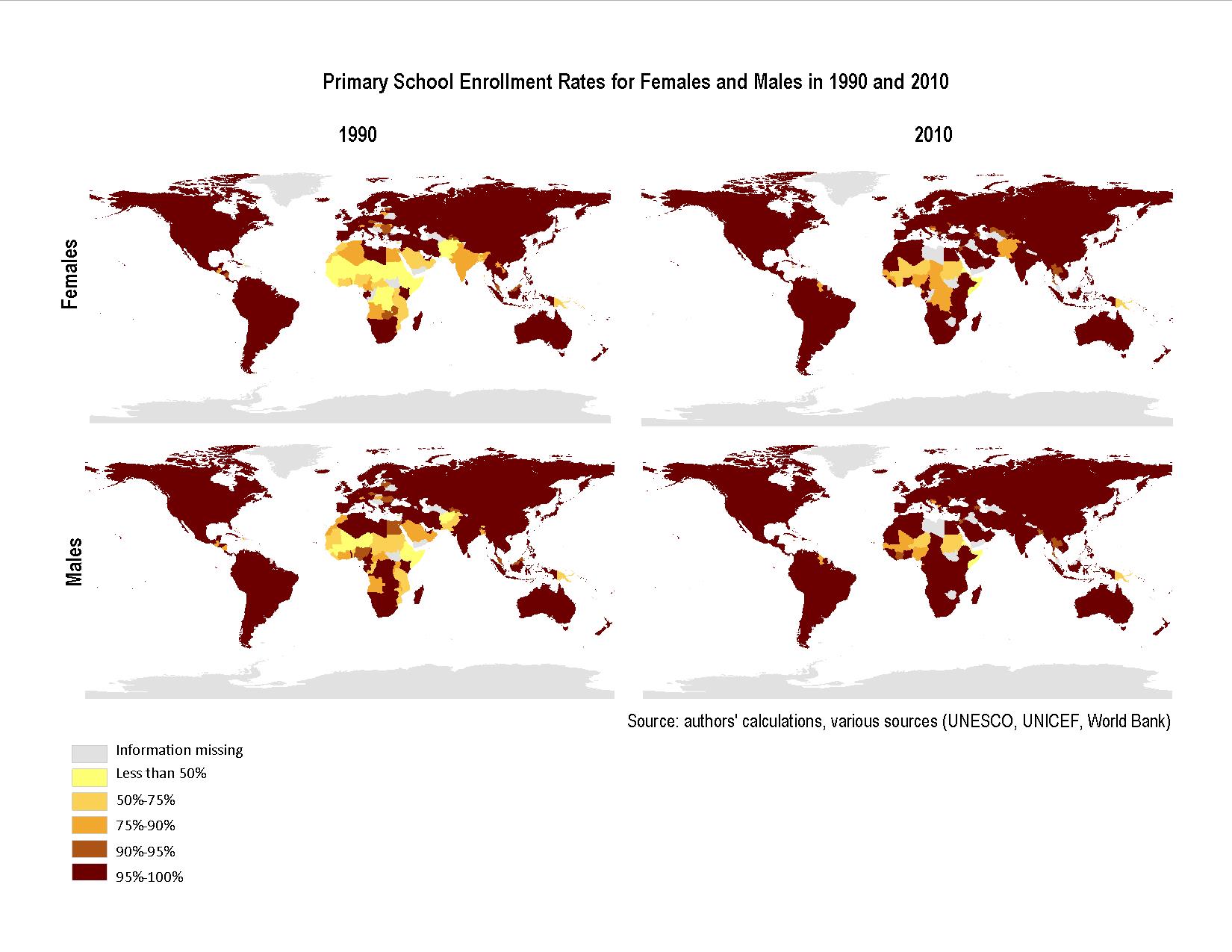In the coming months, leaders from across the world will agree on a new set of global development goals that will set the agenda for United Nations (U.N) member countries through 2030. To achieve the long term benefits envisioned by Secretary General Ban Ki-Moon, these goals must include a focus on early childhood development.
The global community has made major progress towards improving the lives of children over the last two decades. The draft education report issued last month by the United Nations Sustainable Development Solutions Network (UNSDSN), the research and technical advisory network set up at the request of the U.N Secretary-General, provides important data on this front. The report indicates that in the years since the United Nations World Summit for Children identified barriers to education as a key impediment to children's well-being, enrollments in primary and secondary school have increased dramatically while the gaps in educational access between boys and girls have narrowed in nearly every corner of the world.
These efforts are far from complete but, as the maps below demonstrate, progress is hard to deny.

Click here to view a set of interactive maps of pre-primary, primary, secondary, and post secondary school enrollment for males and females across the world in 1990 and 2010.
Although these successes are laudable, the persistently low percentages of children enrolled in proven early childhood development programs and policies indicate a missed opportunity to meaningfully improve global child well-being. For example, in low-income countries, enrollment in preprimary education progressed from a very low 11% in 1990 to only 15% in 2010.
Children's experiences in their early years have a profound influence on their subsequent academic achievement and lifelong economic productivity. Investing in early childhood development therefore represents an extraordinary value. Raising preschool enrollment to 50% in every country, for example, has been estimated by economists Jere Behrman and Sergio Urzua to produce benefits of over $33 billion US, with a benefit-cost ratio of between 7.8 and 17.6. Both basic primary health care and nutrition interventions show evidence of cost-effectiveness, yet in many countries many families lack access to critical supports in the first 1,000 days such as nutritional supplements, clean water and sanitation, prenatal and postnatal care, birth attendance, and preventive and curative interventions. There is evidence of the large benefits of adding an emphasis on parenting responsiveness and stimulation for infant and young child learning to these early health and nutrition programs. For example, a Jamaican program integrating parenting with nutritional support in the first two years of life boosted earnings by a whopping 50 percent among children 20 years later, and also increased IQ and high school completion, and reduced anxiety and depression.
First, parenting support must be integrated with basic nutrition and health care interventions, with a particular focus on the first three years of life. The added benefits for children's learning and development from this added emphasis on parenting represent one of the most consistent findings in the field.
Second, at least one year of preprimary education of high quality should be accessible to all children. In 2010, fewer than two out of every ten children in low-income countries had access to preprimary education.
Third, the two most powerful indicators of extreme risk (stunting and absolute poverty of under $1 a day income) must be reduced: the first through water, sanitation, hygiene, nutrition and basic health care, for all; and the second through cash transfer and other poverty reduction efforts.
The increases in primary and secondary school enrollment for both boys and girls over the last two decades demonstrate that concerted global efforts to achieve clearly delineated development goals can lead to real changes in the lives of children.
The continued large number of the world's children starting life at severe risk threatens the broader global goal of sustainable development. The capacity of nations to build sustainable systems and infrastructure, innovate and invest in technology, and grow while reducing impact on the earth's resources all depend on a workforce with the skills that are foundational to civic engagement, creativity and productivity. The vital role of comprehensive approaches to early childhood development in societal improvement, neglected in the Millennium Development Goals, must be recognized in the post-2015 goals.
Hirokazu Yoshikawa is the Courtney Sale Ross University Professor of Globalization and Education at New York University. He is the Co-Chair of the UN Sustainable Development Solutions Network workgroup on education.
Todd Grindal is an Associate/Scientist with Abt Associates where he provides expertise on the impact of public policies on young children and children with disabilities.
All views and opinions expressed in this blog are solely those of the authors.
Note: In some cases where data were missing for either 1990 or 2010, we used an average available data from two years prior and two years after the focal year.
Map data are drawn from the following sources:
Pre-Primary Enrollment : (EFA Global Monitoring Report Database,2002), (World Bank World Development Indicators Database 2013) & (UN ChildInfo MICS Database 2007-2010)
Primary Enrollment Rates: (EFA Global Monitoring Report Database, 2012, 2002), (World Bank World Development Indicators Database 2013) , (UNESCO Institute Of Statistics Database 2010) & (UN ChildInfo MICS Database 2007-2010)
Secondary Enrollment Rates: (EFA Global Monitoring Report Database, 2012, 2002) , (World Bank World Development Indicators Database 2013) , (UNESCO Institute Of Statistics Database 2010) & (UN ChildInfo MICS Database 2007-2010)
Literacy Rates: (EFA Global Monitoring Report Database,2002), (World Bank. 2013. World Development Indicators), (UN ChildInfo MICS Database 2005-2010)
Tertiary School Enrollment Rates: (EFA Global Monitoring Report Database, 2012, 2002) & (World Bank. 2013. World Development Indicators)

